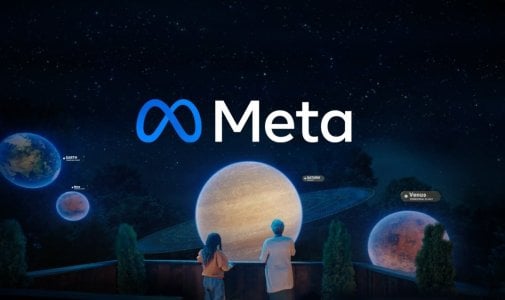Scam alert: Australia strikes back against social media fraudsters!
- Replies 10
In a significant crackdown on online fraud, authorities have recently removed thousands of scam pages from a popular social media platform following alarming reports of Australian citizens losing millions to deceptive schemes.
The urgency of this action reflects broader concerns about digital safety, as regulators and financial institutions are increasingly collaborating to enhance protective measures against such scams.
With new legislative proposals on the horizon aimed at strengthening accountability among tech giants and financial services, the fight against online fraud continues to gain momentum.
Australians may notice a reduction in deepfake images on social media platforms depicting celebrities in compromising situations or endorsing fraudulent cryptocurrency investments.
This change follows Meta's introduction of a comprehensive resource that allows banks to report scams.
Within its first six months, this resource successfully removed 8,000 scam pages and 9,000 fraudulent celebrity accounts.

Between January and August 2024, Scamwatch reported that Australians lost $43.4 million due to social media scams, with nearly $30 million attributed to fake investment schemes.
In recent years, Meta, the parent company of Facebook and Instagram, has faced mounting pressure from lawmakers and regulators to address the surge of scams involving deepfake images of public figures, including David Koch, Gina Rinehart, Anthony Albanese, and Guy Sebastian, used to promote these deceptive investments.
Andrew Forrest, the mining magnate, is suing the company for its alleged failure to combat scams that exploit his image.
On Wednesday, Meta announced a collaboration with the Australian Financial Crimes Exchange (AFCX) to create the Fraud Intelligence Reciprocal Exchange (Fire).
This initiative establishes a specific reporting channel for scams, allowing banks to report known scams directly to Meta while enabling Meta to alert all participating banks about scams it detects on its platform.
The Fire program includes seven banks: ANZ, Bendigo Bank, Commonwealth Bank of Australia (CBA), HSBC, Macquarie, National Australia Bank (NAB), and Westpac.
This initiative operates separately from the AFCX’s Intel Loop information-sharing service, which involves those banks, as well as Optus, Pivotel, Telstra, TPG, and the National Anti-Scams Centre. However, the banks utilise Intel Loop to report information into Fire.
Since launching a pilot program in April, there have been 102 reports leading to Meta's removal of over 9,000 scam pages and 8,000 AI-generated celebrity investment scams from Facebook and Instagram.
While these initial results are encouraging, the number of reports made through the Fire program is significantly lower than the total reported losses to Scamwatch, which received 1,600 reports of social media scams in August alone.
Globally, Meta reported taking down 1.2 billion fake accounts in the last quarter, with 99.7 per cent of these accounts removed before any user reported them.
Rhonda Luo, Head of Stakeholder Engagement at AFCX, stated that the program aims to make Australia a less attractive target for scammers.
Meanwhile, David Agranovich, Meta’s Director of Global Threat Disruption, noted that the system would help Meta gain insights into scam activities occurring outside its platforms, enabling better connections to the scams happening on Facebook and Instagram.
‘This channel allows financial institutions to provide insights and intelligence that we as a platform may not and often do not see from scam activity that might be happening on those financial institutions services,’ he stated.
Meta shares lists of blocked domains with its partners and will soon integrate its threat exchange system into the Fire platform.
This system helps Meta identify signals related to covert influence operations, child exploitation, and other illegal activities occurring on its platforms.
‘Scammers aren’t going to stop their activities. Once we’ve blocked them, they’ll look for new ways to come back, new ways to get around our defensive, which is why continued information sharing like this is so critical,’ Mr Agranovich continued.
He acknowledged that Australians might be frustrated with the challenges of reporting scams to Meta, and he stated that improving this process is a priority for the company.
‘What we find is there’s a huge chunk of things to get taken down in an automated way by either our scale detection or by our investigators looking for things that got through that detection, but there are still things that are making it through,’ Mr Agranovich explained.
‘And signal sharing from partners like AFCX and from banks or from users who see things on the platform can help us figure out why and where are those automated detection systems failing.’
Both the Commonwealth Bank and ANZ expressed their support for the partnership in statements released by Meta.
Last month, Stephen Jones, Australia’s Assistant Treasurer, unveiled draft legislation aimed at creating a scams prevention framework.
This framework would impose codes on banks, telecommunications companies, and social media platforms to enhance their responses to scams and establish effective dispute-resolution processes for scam victims.
The consultation period for this draft legislation concludes on 4 October.
 Have you or someone you know been targeted by these deepfake scams? How do you ensure the legitimacy of online endorsements? Share your experiences and tips in the comments below to help your fellow members stay safe online.
Have you or someone you know been targeted by these deepfake scams? How do you ensure the legitimacy of online endorsements? Share your experiences and tips in the comments below to help your fellow members stay safe online.
The urgency of this action reflects broader concerns about digital safety, as regulators and financial institutions are increasingly collaborating to enhance protective measures against such scams.
With new legislative proposals on the horizon aimed at strengthening accountability among tech giants and financial services, the fight against online fraud continues to gain momentum.
Australians may notice a reduction in deepfake images on social media platforms depicting celebrities in compromising situations or endorsing fraudulent cryptocurrency investments.
This change follows Meta's introduction of a comprehensive resource that allows banks to report scams.
Within its first six months, this resource successfully removed 8,000 scam pages and 9,000 fraudulent celebrity accounts.

Meta, in collaboration with AFCX, launched the Fraud Intelligence Reciprocal Exchange (Fire), resulting in the blocking of 8,000 scam pages and 9,000 fraudulent celebrity accounts in its first six months. Credit: Facebook / Meta
Between January and August 2024, Scamwatch reported that Australians lost $43.4 million due to social media scams, with nearly $30 million attributed to fake investment schemes.
In recent years, Meta, the parent company of Facebook and Instagram, has faced mounting pressure from lawmakers and regulators to address the surge of scams involving deepfake images of public figures, including David Koch, Gina Rinehart, Anthony Albanese, and Guy Sebastian, used to promote these deceptive investments.
Andrew Forrest, the mining magnate, is suing the company for its alleged failure to combat scams that exploit his image.
On Wednesday, Meta announced a collaboration with the Australian Financial Crimes Exchange (AFCX) to create the Fraud Intelligence Reciprocal Exchange (Fire).
This initiative establishes a specific reporting channel for scams, allowing banks to report known scams directly to Meta while enabling Meta to alert all participating banks about scams it detects on its platform.
The Fire program includes seven banks: ANZ, Bendigo Bank, Commonwealth Bank of Australia (CBA), HSBC, Macquarie, National Australia Bank (NAB), and Westpac.
This initiative operates separately from the AFCX’s Intel Loop information-sharing service, which involves those banks, as well as Optus, Pivotel, Telstra, TPG, and the National Anti-Scams Centre. However, the banks utilise Intel Loop to report information into Fire.
Since launching a pilot program in April, there have been 102 reports leading to Meta's removal of over 9,000 scam pages and 8,000 AI-generated celebrity investment scams from Facebook and Instagram.
While these initial results are encouraging, the number of reports made through the Fire program is significantly lower than the total reported losses to Scamwatch, which received 1,600 reports of social media scams in August alone.
Globally, Meta reported taking down 1.2 billion fake accounts in the last quarter, with 99.7 per cent of these accounts removed before any user reported them.
Rhonda Luo, Head of Stakeholder Engagement at AFCX, stated that the program aims to make Australia a less attractive target for scammers.
Meanwhile, David Agranovich, Meta’s Director of Global Threat Disruption, noted that the system would help Meta gain insights into scam activities occurring outside its platforms, enabling better connections to the scams happening on Facebook and Instagram.
‘This channel allows financial institutions to provide insights and intelligence that we as a platform may not and often do not see from scam activity that might be happening on those financial institutions services,’ he stated.
Meta shares lists of blocked domains with its partners and will soon integrate its threat exchange system into the Fire platform.
This system helps Meta identify signals related to covert influence operations, child exploitation, and other illegal activities occurring on its platforms.
‘Scammers aren’t going to stop their activities. Once we’ve blocked them, they’ll look for new ways to come back, new ways to get around our defensive, which is why continued information sharing like this is so critical,’ Mr Agranovich continued.
He acknowledged that Australians might be frustrated with the challenges of reporting scams to Meta, and he stated that improving this process is a priority for the company.
‘What we find is there’s a huge chunk of things to get taken down in an automated way by either our scale detection or by our investigators looking for things that got through that detection, but there are still things that are making it through,’ Mr Agranovich explained.
‘And signal sharing from partners like AFCX and from banks or from users who see things on the platform can help us figure out why and where are those automated detection systems failing.’
Both the Commonwealth Bank and ANZ expressed their support for the partnership in statements released by Meta.
Last month, Stephen Jones, Australia’s Assistant Treasurer, unveiled draft legislation aimed at creating a scams prevention framework.
This framework would impose codes on banks, telecommunications companies, and social media platforms to enhance their responses to scams and establish effective dispute-resolution processes for scam victims.
The consultation period for this draft legislation concludes on 4 October.
Key Takeaways
- Australians reported $43.4m in losses from social media scams between January and August 2024, with close to $30m relating to fake investment scams featuring deepfake images of celebrities.
- Meta, in partnership with the Australian Financial Crimes Exchange (AFCX), launched the Fraud Intelligence Reciprocal Exchange (Fire) which has led to the blocking of 8,000 pages and 9,000 celebrity scams within its first six months of operation.
- The Fire program is a collaborative effort between Meta and several Australian banks, aimed at making Australia a less appealing target for scammers through information sharing and coordinated action.
- Meta is improving scam reporting processes and aims to make it easier for Australians to report fraudulent activities, acknowledging the frustration users feel about the current difficulty in reporting scams.







